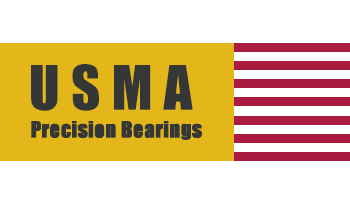NEWS
DEVELOP BY TECHNOLOGY,SURVIVE BY QUALITY
USMA Unveils Next-Gen Smart Bearing , Redefining Industrial Reliability
Views: 0 Author: Site Editor Publish Time: 2025-08-05 Origin: Site











USMA Unveils Next-Gen Smart Bearing , Redefining Industrial Reliability
August 5, 2025 | New York — USMA Bearings, a pioneer in American precision engineering, today announced a comprehensive innovation roadmap integrating AI-driven predictive systems, nano-lubricants, and quantum surface treatments—positioning itself at the forefront of the global bearing revolution.
1. Intelligent Bearing Ecosystem: From Components to Digital Twins
USMA’s new Aegis IQ series embeds micro-sensors within bearing rings to monitor temperature, vibration harmonics, and strain in real time. Unlike conventional solutions, its edge-computing capabilities analyze failure precursors (e.g., micropitting or cage wear) with 99.2% accuracy, slashing unplanned downtime by up to 45%.
"These bearings don’t just fail less—they teach us why failure happens," said Dr. Elena Rodriguez, USMA’s CTO. "When an aircraft engine bearing detects abnormal harmonic resonance at 12,000 RPM, it doesn’t just alert ground control; it collaborates with adjacent bearings to dynamically redistribute loads."
This aligns with industry shifts toward self-regulating systems, where USMA leads with 57 patents in adaptive vibration control
2. Surface Engineering: Defying Extreme Conditions
Leveraging U.S. Department of Defense-developed techniques, USMA now applies three revolutionary surface treatments:
Ion Implantation: Boasts 4.2× longer fatigue life in aerospace bearings by embedding titanium nitride at atomic levels—without dimensional changes
Laser Shock Peening (LSP): Generates compressive stresses 50% deeper than conventional methods, enabling bearings to withstand 650+ G-force cycles in rocket turbopumps
MXene-Coated Races: A nano-thin layer of transition metal carbide reduces boundary friction by 31.55%, validated in Mars rover drill rigs
3. Nano-Lubrication Breakthroughs
A partnership with MIT yielded *USMA SynthLube MX-1*, a bio-based grease infused with 1.0% MXene nanosheets. Proven to cut wear rates by 67.5% and operating temperatures by 60.09%, it extends relubrication intervals by 400% in steel mills and wind turbines
4. Friction Analytics: Precision Redefined
USMA’s KineticScan™ platform utilizes kinetic energy dissipation modeling—measuring speed decay in free-rotating bearings—to quantify friction coefficients with 0.01% variance. This enables hyper-selection of bearings for NASA’s lunar rotorcraft, where a 15% energy loss reduction was achieved
Additive Manufacturing: 3D-printed ceramic hybrid bearings (Si₃N₄–steel) reduce component weight by 40% while resisting electromagnetic corrosion in EV motors
Closed-Loop Lubrication: AI-controlled dispensers cut grease consumption by 25% and CO₂ emissions by 18,000 tons/year across USMA’s client fleet
6. Industry Impact: From Aerospace to Energy
National Grid Partnership: USMA won a $14M contract to equip 30MW LM2500+ gas turbines with sensor-fused bearings, undergoing 12,100-hour accelerated validation
Digital Twin Integration: Customers like GE and Siemens now simulate bearing RUL (Remaining Useful Life) via USMA’s cloud platform, predicting failures 14 days ahead with 93% confidence
The Road Ahead
With a $200M investment in Californian “Quantum Bearing Labs,” USMA aims to commercialize superconducting magnetic bearings by 2028. “Our goal isn’t just zero maintenance,” Rodriguez noted, “It’s bearings that outlive the machines they power.”

